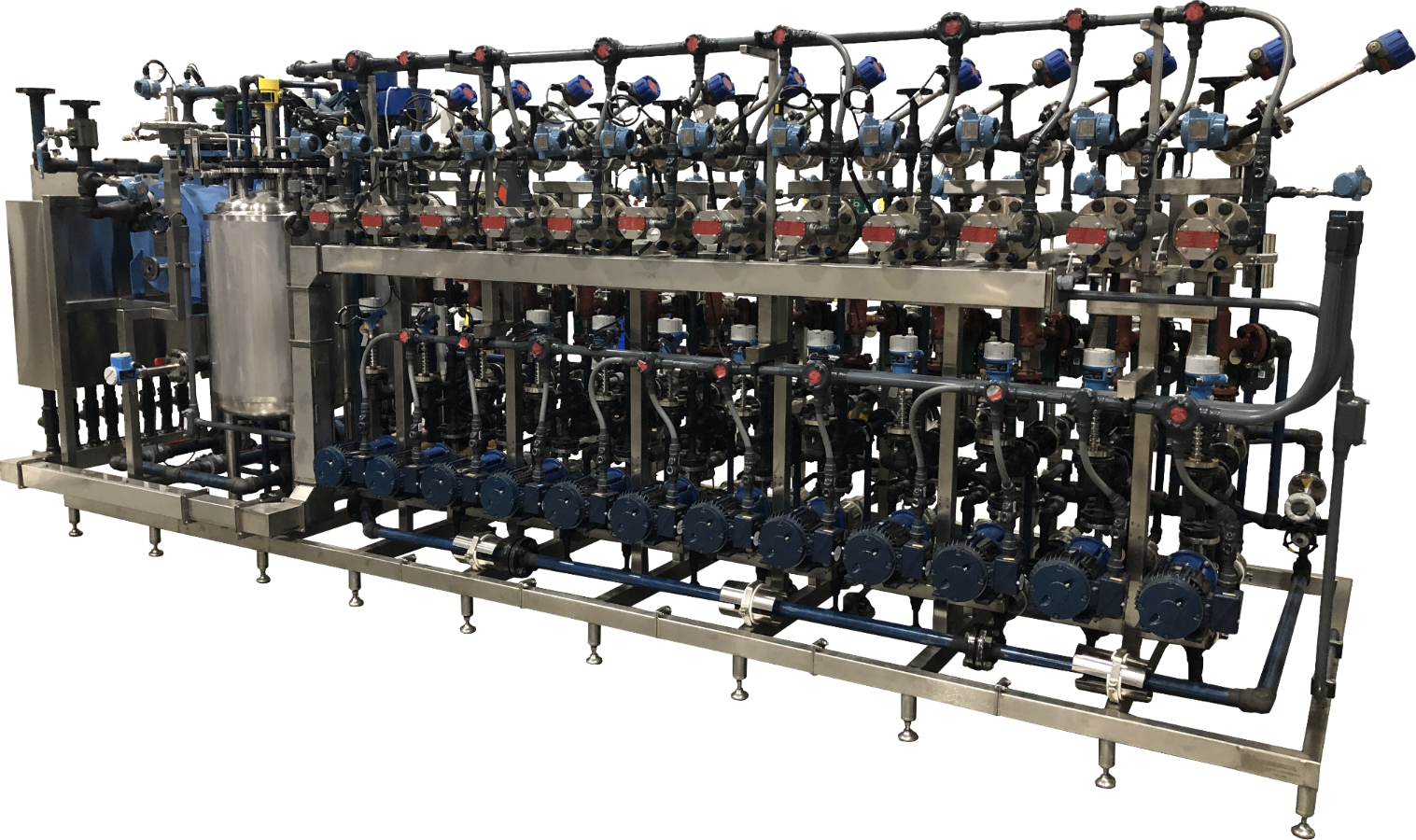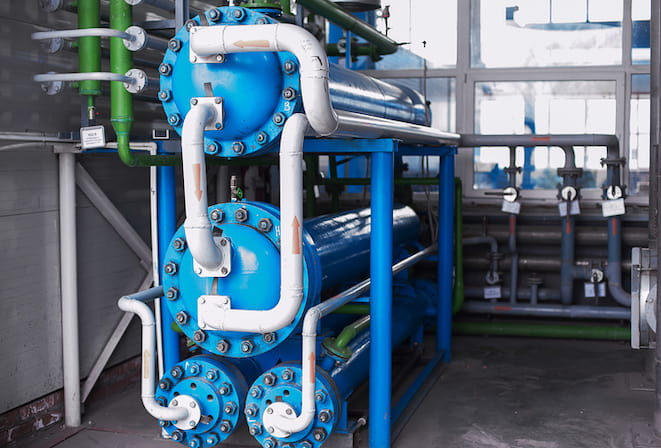Live Data Feedback: How DVS Heat Transfer Systems Enable Predictive Maintenance
Wiki Article
Discovering the Benefits and Applications of Heat Transfer Solutions in Modern Market
Heat transfer systems play an important function in contemporary market. They incorporate numerous mechanisms such as convection, radiation, and conduction, each adding to effective thermal monitoring. Industries like production and aerospace benefit substantially from these systems. As improvements continue, the assimilation of ingenious materials and modern technologies assures to enhance energy effectiveness. This advancement elevates important questions about the future ramifications for sustainability and functional prices across several markets. What lies ahead in this ongoing transformation?Understanding Heat Transfer Concepts
Heat transfer principles are basic to the procedure of different industrial systems. These concepts include the systems of radiation, transmission, and convection, each playing a crucial duty in taking care of thermal energy. Understanding transmission involves analyzing exactly how Heat relocates through strong materials, while convection concern Heat transfer in liquids, driven by fluid activity. Radiation, unique from the other two, involves energy transfer via electromagnetic waves. The efficiency of Heat transfer impacts system efficiency, energy consumption, and total productivity. Reliable thermal administration is important in procedures such as air conditioning, Heat, and heating recovery. By mastering these concepts, industries can maximize their operations, reduce energy prices, and boost devices long life, thus adding to a more reliable and lasting industrial landscape.Secret Kinds Of Heat Transfer Equipments
While various industries use Heat transfer systems for varied applications, numerous vital types stand apart because of their details features and efficiencies. The most common types include conduction, radiation, and convection systems. Conduction systems transfer Heat through direct contact between materials, making them effective in solid-state applications. Convection systems, on the other hand, utilize fluid movement to move Heat, ideal for home heating or cooling down fluids and gases. Radiation systems run without a medium, depending on electromagnetic waves to transfer Heat, ideal for high-temperature environments. Each kind offers distinctive objectives, permitting markets to tailor their Heat transfer services based upon functional demands, energy efficiency, and cost-effectiveness. Understanding these systems is necessary for enhancing performance in various commercial setups.Industrial Applications of Heat Transfer Technologies
The application of Heat transfer innovations in industry plays a vital role in boosting power efficiency and maximizing procedures. DVS Heat Transfer Systems. By executing advanced Heat exchange systems, companies can greatly minimize their environmental influence while enhancing overall performance. This combination not just promotes sustainability however also lines up with modern governing and consumer needs for greener practicesPower Efficiency Improvements
As sectors progressively focus on sustainability, energy performance improvements in Heat transfer technologies have actually become crucial for minimizing operational prices and environmental influence. Improved Heat exchangers, for circumstances, utilize advanced products and designs to make the most of thermal efficiency while minimizing power intake. Incorporating variable rate drives in pumping systems allows for much better control of fluid flow, leading to considerable power financial savings. The execution of smart sensors and automation supplies real-time surveillance, making it possible for adjustments that optimize energy use. Furthermore, waste Heat recuperation systems record excess thermal power, converting it into functional power. These innovations not just boost power efficiency however additionally add to a more sustainable commercial landscape by reducing greenhouse gas exhausts and sustaining conformity with ecological policies.Process Optimization Techniques
Process optimization techniques are vital in improving the efficiency and effectiveness of Heat transfer innovations in commercial applications. These methods involve refining procedures to take full advantage of Heat transfer performance while minimizing power intake and operational expenses. Methods such as computational fluid characteristics (CFD) modeling permit designers to replicate and examine Heat transfer circumstances, determining areas for improvement. Additionally, real-time surveillance systems can give beneficial information on temperature level gradients and flow prices, making it possible for modifications that optimize efficiency. Additionally, carrying out sophisticated control strategies, such as predictive analytics, can boost system responsiveness to differing operational needs. By using these optimization techniques, sectors can accomplish better thermal effectiveness, decreased downtime, and boosted product high quality, eventually bring about increased competitiveness in the market.
Ecological Effect Decrease
While industrial Heat transfer modern technologies are vital for functional efficiency, their application likewise offers opportunities for considerable ecological impact reduction. By enhancing power efficiency, these systems reduce gas intake, leading to lower greenhouse gas discharges. For circumstances, progressed Heat exchangers can recover waste Heat, redirecting it to preheat inbound liquids, therefore decreasing energy requirements. In addition, the combination of Heat transfer innovations in eco-friendly power systems, such as solar thermal and geothermal applications, sustains the change to lasting techniques. Industries that use these modern technologies additionally take advantage of lowered functional prices and boosted regulatory compliance. Overall, the strategic implementation of Heat transfer systems not just boosts performance however additionally fosters a more lasting commercial landscape, adding to worldwide environmental goals.Advantages of Reliable Heat Transfer Solutions
Efficient Heat transfer systems supply considerable advantages in modern sector, mostly with enhanced power effectiveness and expense decrease. By maximizing thermal administration, these systems minimize power waste, causing lower functional expenses (DVS Heat Transfer Systems). Companies can attain higher sustainability and improved productivity.
Energy Performance Improvements
As sectors significantly prioritize sustainability and cost-effectiveness, energy performance renovations in Heat transfer systems have become an essential emphasis. Enhanced efficiency in these systems brings about lowered energy usage, enabling centers to run more sustainably. By enhancing Heat transfer approaches, markets can minimize waste Heat and accomplish far better thermal administration, significantly lowering their ecological impact. Developments in innovations such as Heat exchangers and insulation materials add to improved efficiency and reliability. Moreover, executing energy-efficient Heat transfer solutions not just sustains compliance with governing standards however additionally fosters a society of innovation within companies. Ultimately, these enhancements are crucial in aligning industrial operations with international power preservation goals, paving the method for an extra lasting future in manufacturing and processing markets.Price Reduction Opportunities
By optimizing Heat transfer systems, markets can disclose substantial cost reduction possibilities that improve their profits. Reliable Heat transfer lowers power intake, bring about reduced utility bills and reducing operational costs. Furthermore, improved system performance reduces the requirement for repair and maintenance, furthermore saving costs over time. Improved Heat transfer can additionally expand devices life expectancy, enabling business to delay capital expenses on substitutes. Waste Heat recuperation systems can change excess Heat into useful energy, even more driving down costs. These systems not just enhance processes yet additionally add to sustainability initiatives, placing business favorably in a significantly eco-conscious market. Generally, the monetary advantages of effective Heat transfer systems are significant and essential for affordable advantage.Developments in Heat Transfer Solutions
Exactly how can modern sector enhance its procedures with cutting-edge Heat transfer remedies? By embracing advanced products and technologies, markets can significantly boost thermal efficiency and efficiency. Innovations such as nanofluids, which improve Heat transfer abilities past conventional liquids, and stage change products that save and release thermal power, are obtaining traction. In addition, the integration of wise sensing units and IoT tools enables real-time surveillance and optimization of Heat transfer processes, minimizing waste and boosting system responsiveness. Additive production strategies make it possible for the creation of more complicated Heat exchangers that optimize surface area while reducing material usage. Collectively, these advancements drive functional performance and develop affordable benefits DVS Heat Transfer Systems in numerous fields, consisting of production, aerospace, and power.The Role of Heat Transfer in Sustainability Efforts
While the press for sustainability proceeds to improve markets, the function of Heat transfer technologies becomes increasingly essential in achieving ecological objectives. Efficient Heat transfer systems facilitate power performance by maximizing thermal administration in different processes, substantially lowering power consumption and greenhouse gas emissions. Progressed Heat exchangers are utilized in industrial applications to reclaim waste Heat, consequently reducing energy waste. In addition, technologies such as phase change products improve thermal storage, contributing to eco-friendly power combination. Furthermore, the adoption of lasting liquids in Heat transfer systems can reduce ecological impact. By focusing on efficient Heat transfer, industries not only boost functional efficiency however also line up with worldwide sustainability campaigns, promoting a cleaner, extra sustainable future.Regularly Asked Questions
Exactly How Do Heat Transfer Systems Effect Power Costs in Production?
Heat transfer systems substantially influence energy prices in manufacturing by improving performance, reducing waste, and enhancing thermal monitoring. These improvements result in decrease functional expenses, eventually profiting total productivity and success in commercial procedures.What Upkeep Is Needed for Heat Transfer Systems?
Maintenance for Heat transfer systems includes routine examinations, cleansing of parts, checking fluid levels and conditions, replacing worn parts, and guaranteeing appropriate insulation. These activities improve effectiveness, expand life-span, and protect against pricey breakdowns in operation.Are There Safety And Security Interest In Heat Transfer Systems?
Security interest in Heat transfer systems include potential leakages, pressure accumulation, and thermal dangers. Proper layout, regular upkeep, and adherence to security methods are necessary to reduce these threats and ensure safe procedure in industrial environments.
Exactly How Can I Pick the Right Heat Transfer System for My Business?
Choosing the best Heat transfer system includes assessing variables such as performance, application needs, budget restraints, and safety standards. A comprehensive analysis of these components will certainly aid ensure suitable performance and reliability in organization procedures.What Are Typical Failures in Heat Transfer Solutions and Their Reasons?

Comprehending transmission involves examining just how Heat moves with strong products, while convection pertains to Heat transfer in fluids, driven by fluid movement. By maximizing Heat transfer methods, industries can reduce waste Heat and accomplish much better thermal administration, considerably lowering their ecological influence. Waste Heat healing systems can change excess Heat into usable energy, additionally driving down prices. Progressed Heat exchangers are made use of in industrial applications to reclaim waste Heat, thereby reducing energy waste. Typical failings in Heat transfer systems include leaks, rust, and ineffective Heat exchange.
Report this wiki page